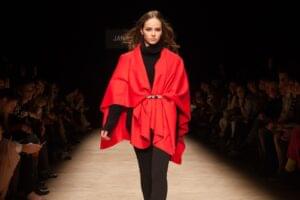The fashion cycle, which sees new trends come and go, causes constant change in the fashion business.
What Is a Trend in Fashion?
When a specific item, shape, color, or other fresh look becomes increasingly popular, it becomes a fashion trend. A trend or fad can be influenced by a variety of causes, such as well-known celebrity clothing, fashion merchandising companies, designer showcases, and textile producers. The introduction of a trend is the first stage of a five-stage cycle that leads to its obsolescence in the world of fashion. After a trend reaches its height, it will start to fade away until the point at which it is no longer seen fashionable and enters the final stage of the cycle, where it is shunned by both the fashion industry and consumers. The rejected style, however, can later reappear in the cycle after becoming obsolete because of the cyclical nature of fashion.
Sponsered6
What Is the Cycle of Fashion?
The fashion cycle is a natural progression of a fashion trend from its introduction through its widespread acceptance, decline, and eventual rejection at the stage of obsolescence. The five phases of a typical fashion cycle are described below:
Sponsered6
1. Introduction
The new fashion trend first makes its appearance during the introductory stage. This introduction may be a deliberate move by a marketing firm or manufacturer, a new haute couture design debuted during fashion week, or an item of clothing worn by a well-known person. The style is typically only offered in limited quantities and at a premium cost from a select group of designers or shops.
2. Increase
The new fashion style starts to gain traction in the fashion business during the growth stage, which is often referred to as the “fashion acceptance” stage, and is then formally given the coveted “trend” moniker. The demand for the item rises as more celebrities and fashion industry influencers, including those on social media, don outfits that feature the trend. More retail outlets will start carrying the style as a result of this approval by fashion influencers.
Sponsered6
3. Peak
The trend has reached complete public saturation during the peak period, and many regular consumers start donning the style. The majority of stores will have noticed and copied the trend, and it will be widely produced at a range of price points, notably at lower rates.
Sponsered6
4. Decline
The trend will have reached oversaturation in the market during the decline stage. Around this time, the trend’s extreme popularity will start to alienate customers who prefer their clothing to feel avant-garde and individual rather than conventional.
5. Obsolescence
The mainstream wearers of fashion, who have shifted to newer trends in the introduction or increase stages, view a trend as out-of-date and out-of-style once it has reached the conclusion of the fashion cycle. A trend may become obsolete, but that doesn’t imply it will never return to the cycle. The cycle is perpetually repeating, bringing back “old fashions” to move them through the fashion cycle. As an illustration, consider the popularity of jean waistlines: high-waisted jeans peaked in the 1940s, late 1970s and early 1980s, and the 2010s, whereas low-waisted jeans peaked in the 1960s, late 1990s, and early 2000s.
Sponsered6
How to Apply the Cycle of Fashion to the Design Process
The fashion cycle can be a big assistance for young fashion designers—or a huge distraction. Here are a few ways you may enhance your design process by utilizing your understanding of the fashion cycle:
Sponsered6
Put needs fulfillment before trends
Burnout can result from expending too much time and creative energy trying to predict the next big thing. Fashion changes frequently. In rare circumstances, a particular fashion trend may emerge and fall in popularity in fewer than two years. Think of “filling needs” rather than worrying about trends; for example, if big coats are trendy, there might be a need for cozy, slim-fitting jackets. Similar to this, consider your own personal fashion requirements and how you might use your ideas to satisfy them. Instead of creating a fashion line that is only affected by trends, be true to yourself when creating your ideas.
Keep in mind that change is normal
The popularity of one of your designs may skyrocket, but once it hits its apex, it will start to wane until eventually being discarded as a normal course of events. It’s crucial to keep in mind that all trends, not just yours, go through this point of the cycle when your design becomes obsolete. The fashion industry is always changing, therefore throughout your career, both you and your designs will develop and change.
Sponsered6
Use your gut feeling
You might want to drop a certain style from your clothing line when it starts to look dated, but you might not have to. Consider keeping a unique silhouette or design in your range rather than getting rid of it to follow the latest fashion if it is approaching obsolescence. If your goal as a designer is to make a timeless item that people enjoy, you must trust your instincts rather than the passing fads of the fashion cycle. The iconic wrap dress by Diane von Furstenberg is a great illustration of how staying true to your designs and avoiding the trend cycle can lead to long-term success.
Years after the silhouette was created by designer Charles James in the 1930s, the designer’s iconic wrap dress was unveiled in the early 1970s to rave reviews. Furstenberg gave the dress her own unique twist by lengthening the sleeves and adding a collar to produce a modern, adaptable form appropriate for a date or the workplace. Furstenberg made the dress a constant component of her design, and decades later, the classic form is still a dependable piece of clothing.
Sponsered6
Interested in Studying Fashion Design More?
Use the MasterClass Annual Membership to advance as a fashion designer. Learn from the greatest in the world with access to their exclusive video courses, which include those from Marc Jacobs, Laura Kim & Fernando Garcia, Tan France, Diane von Furstenberg, Anna Wintour, and more.
Sponsered6




